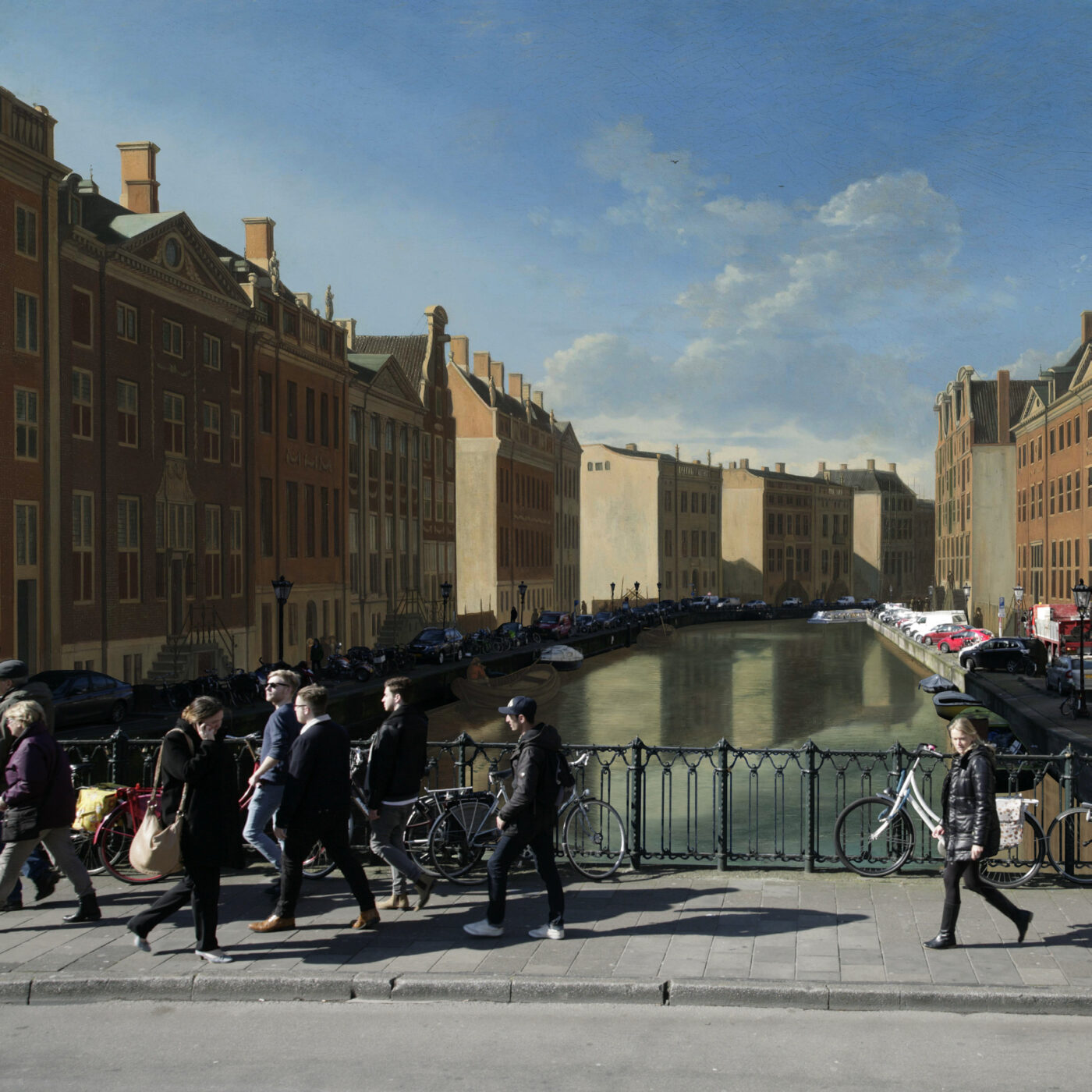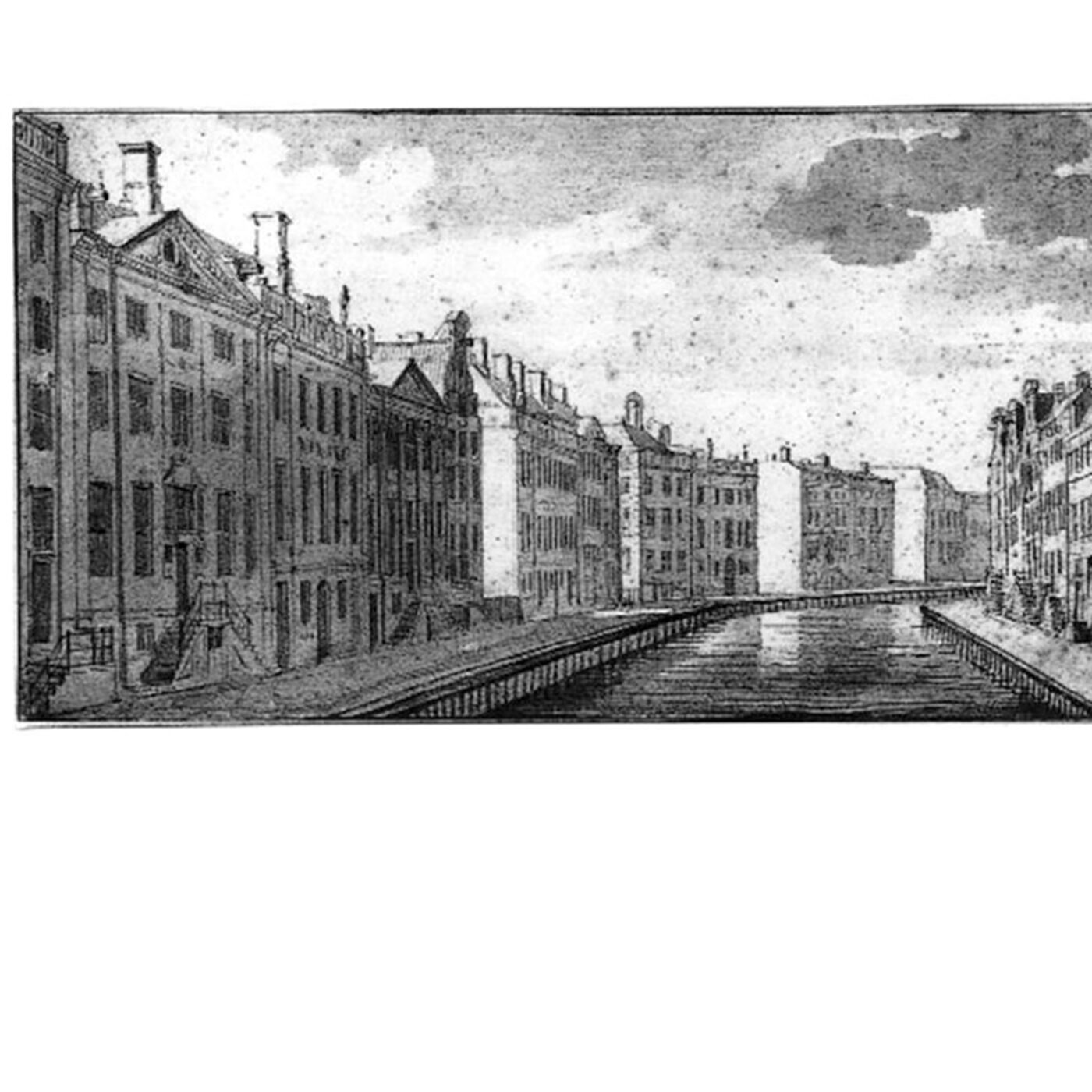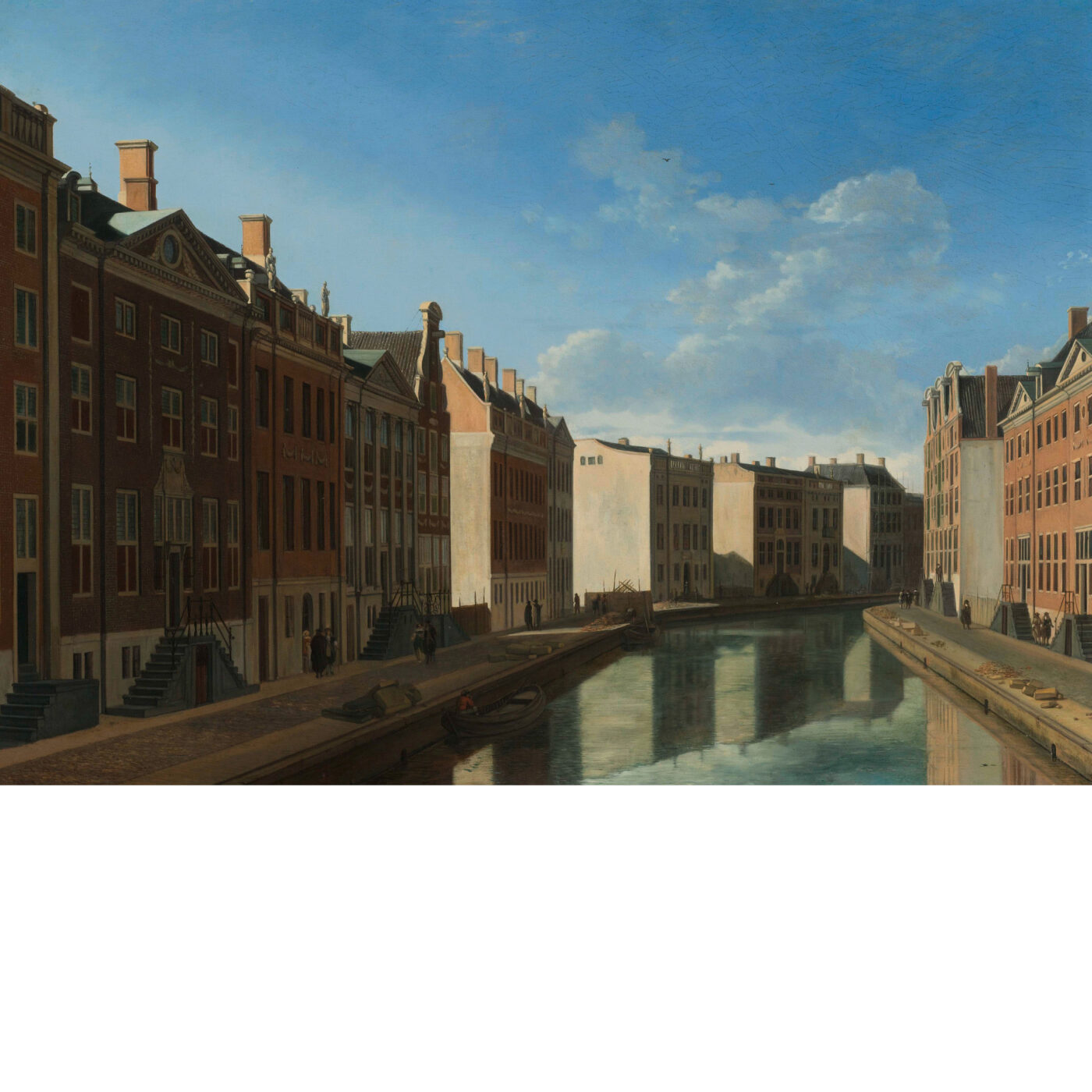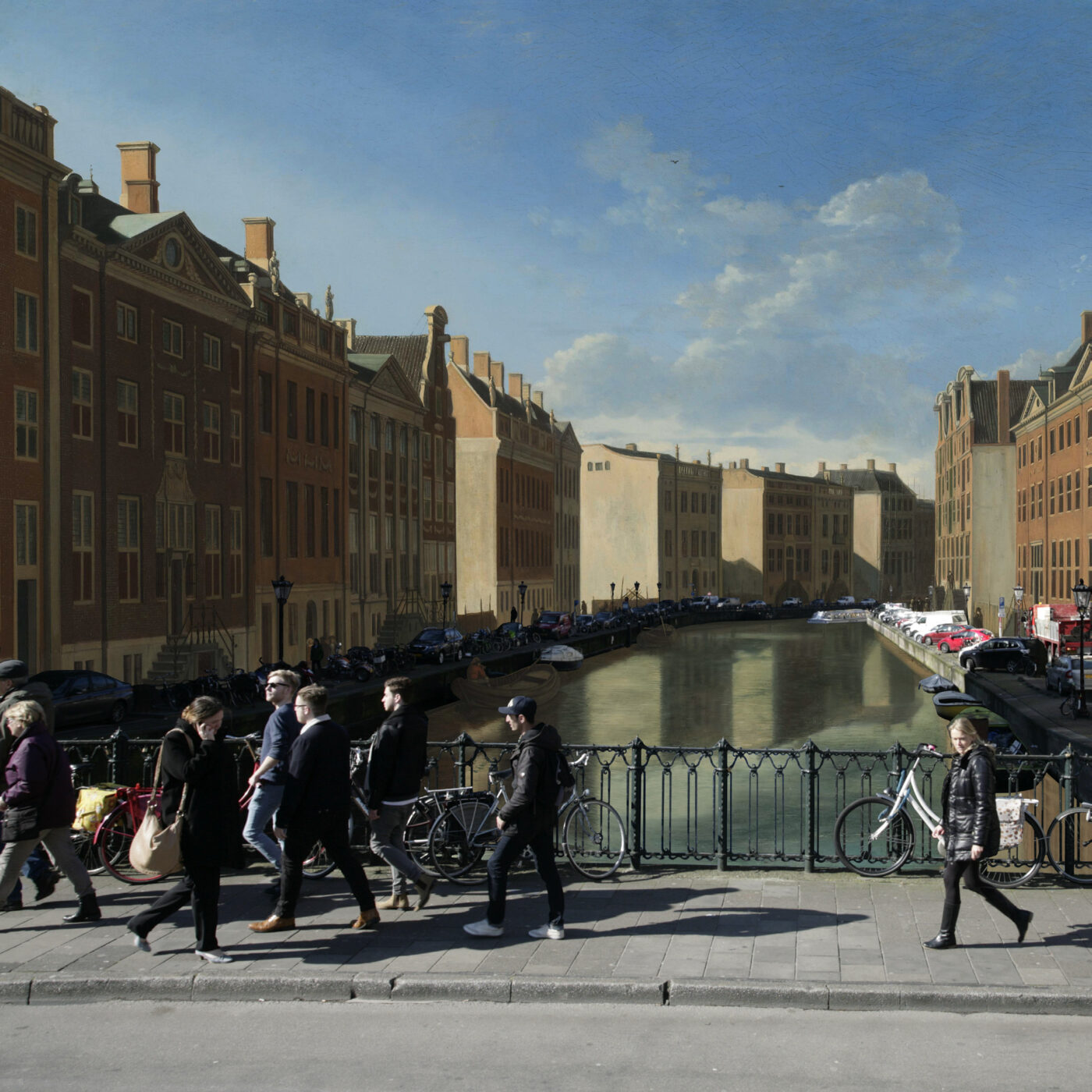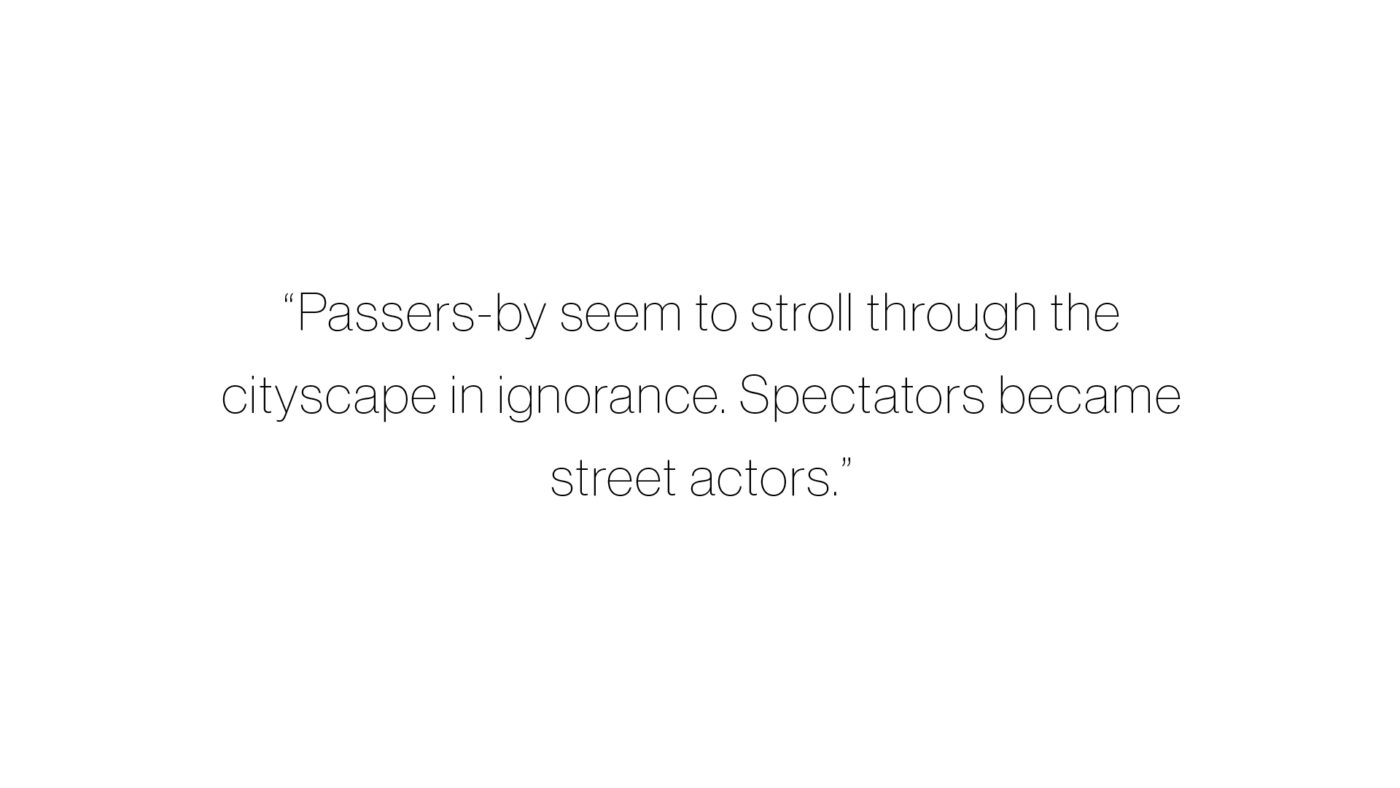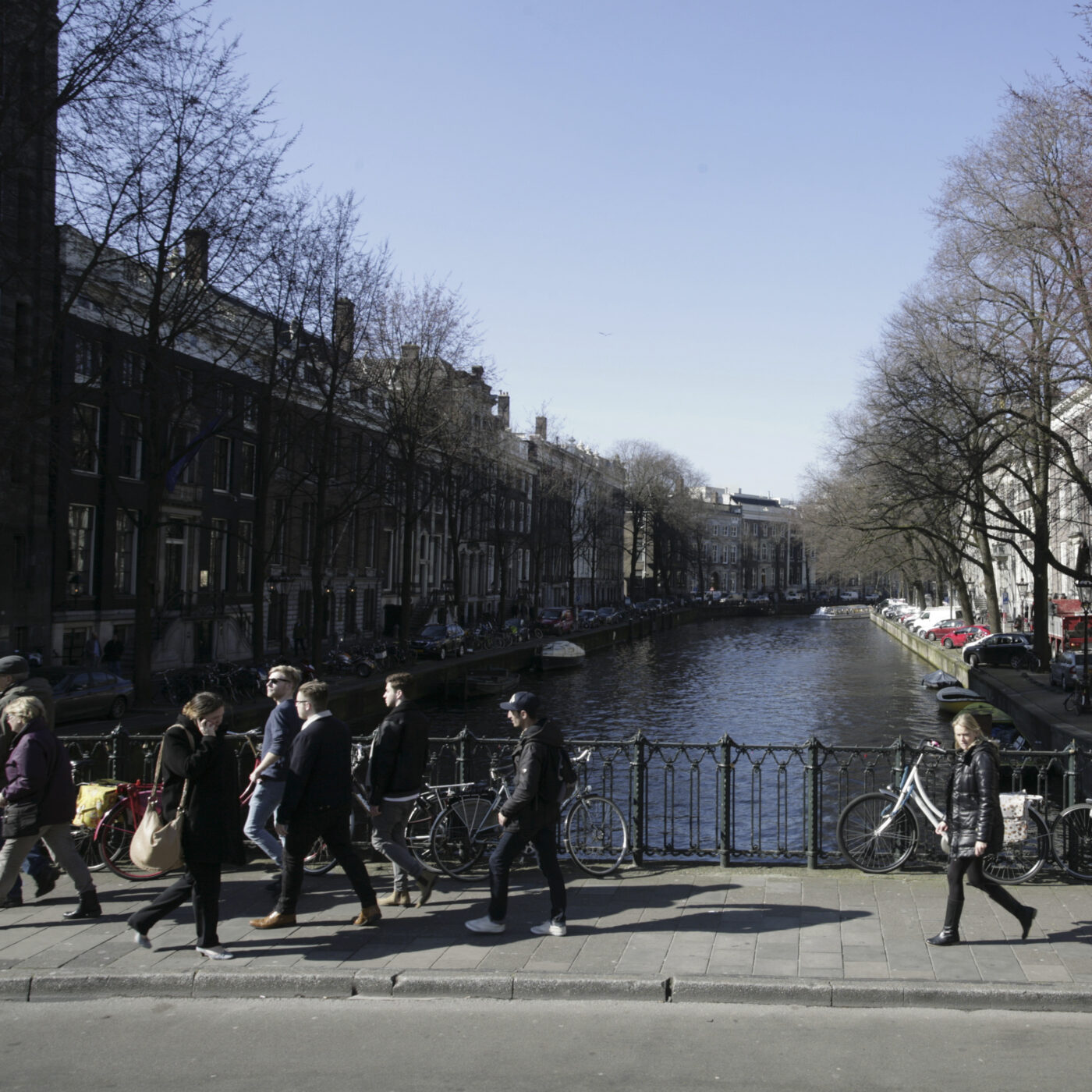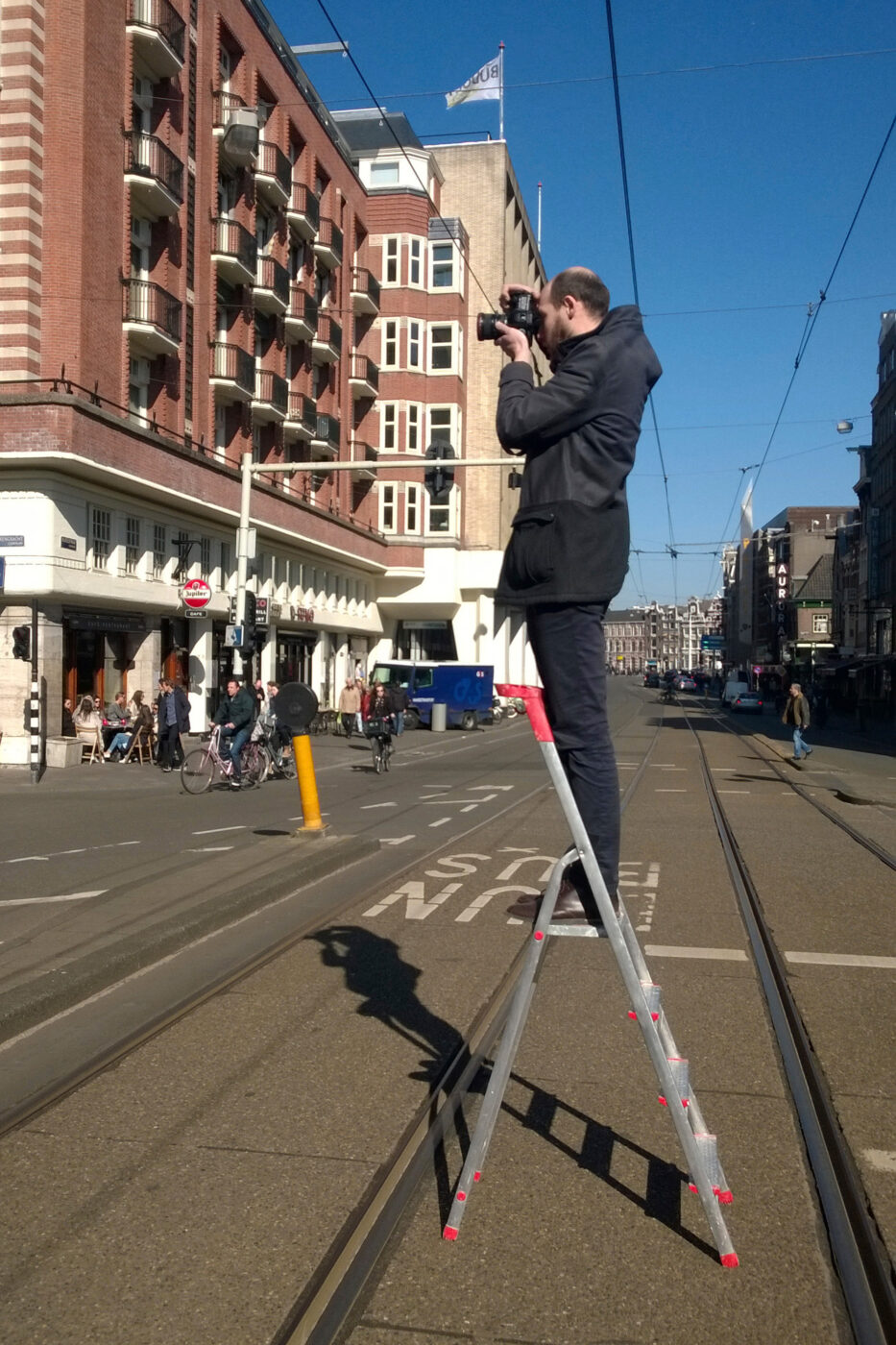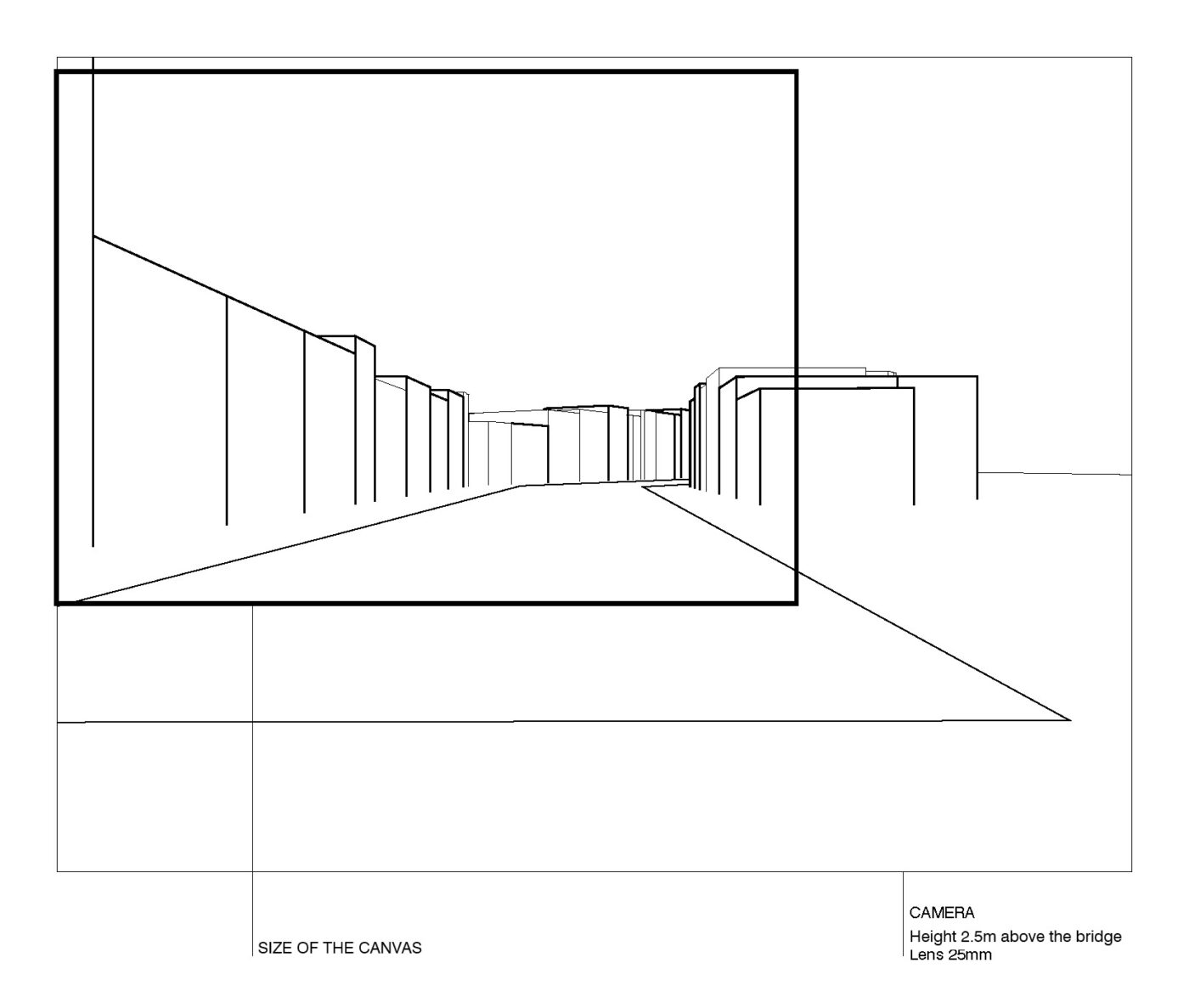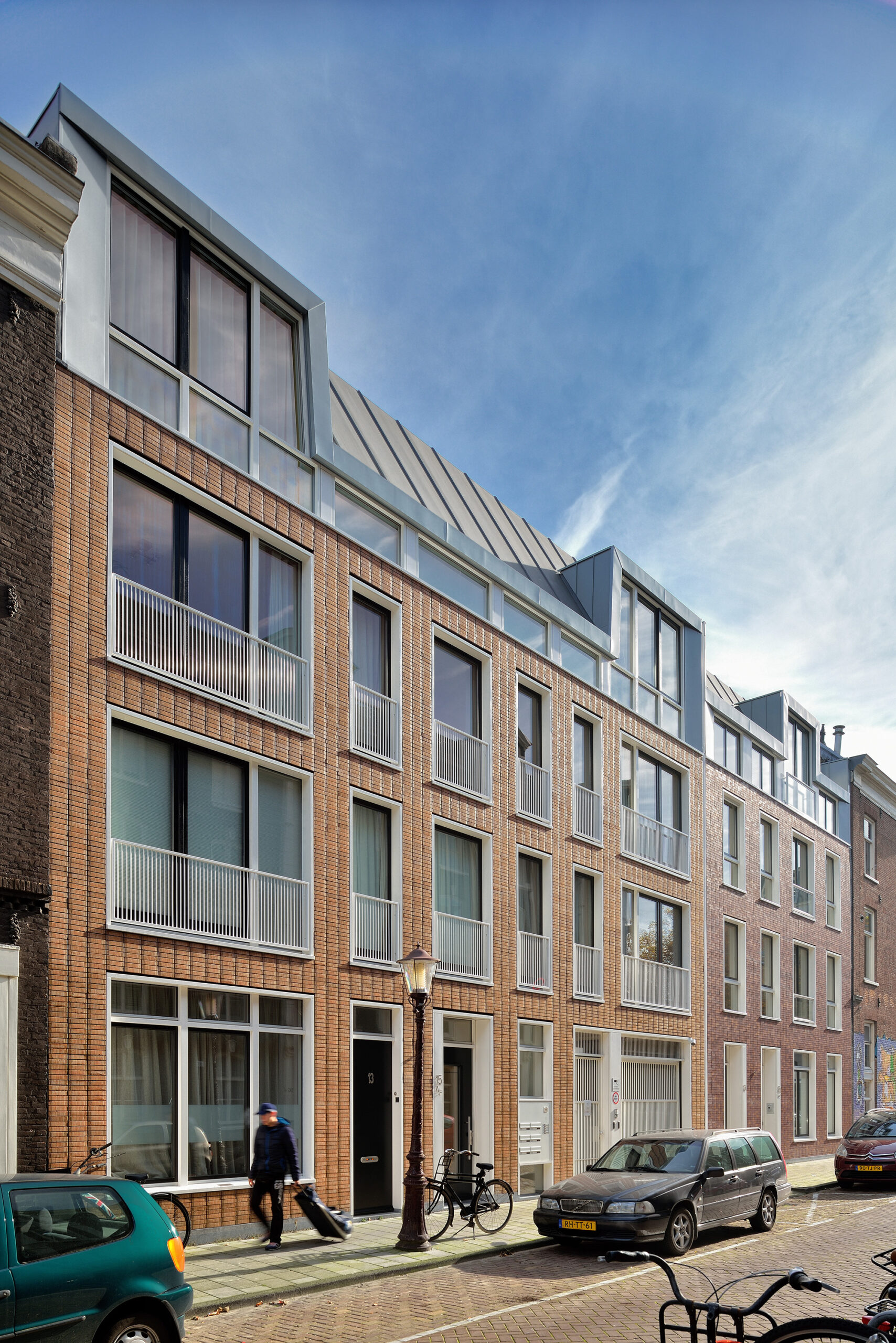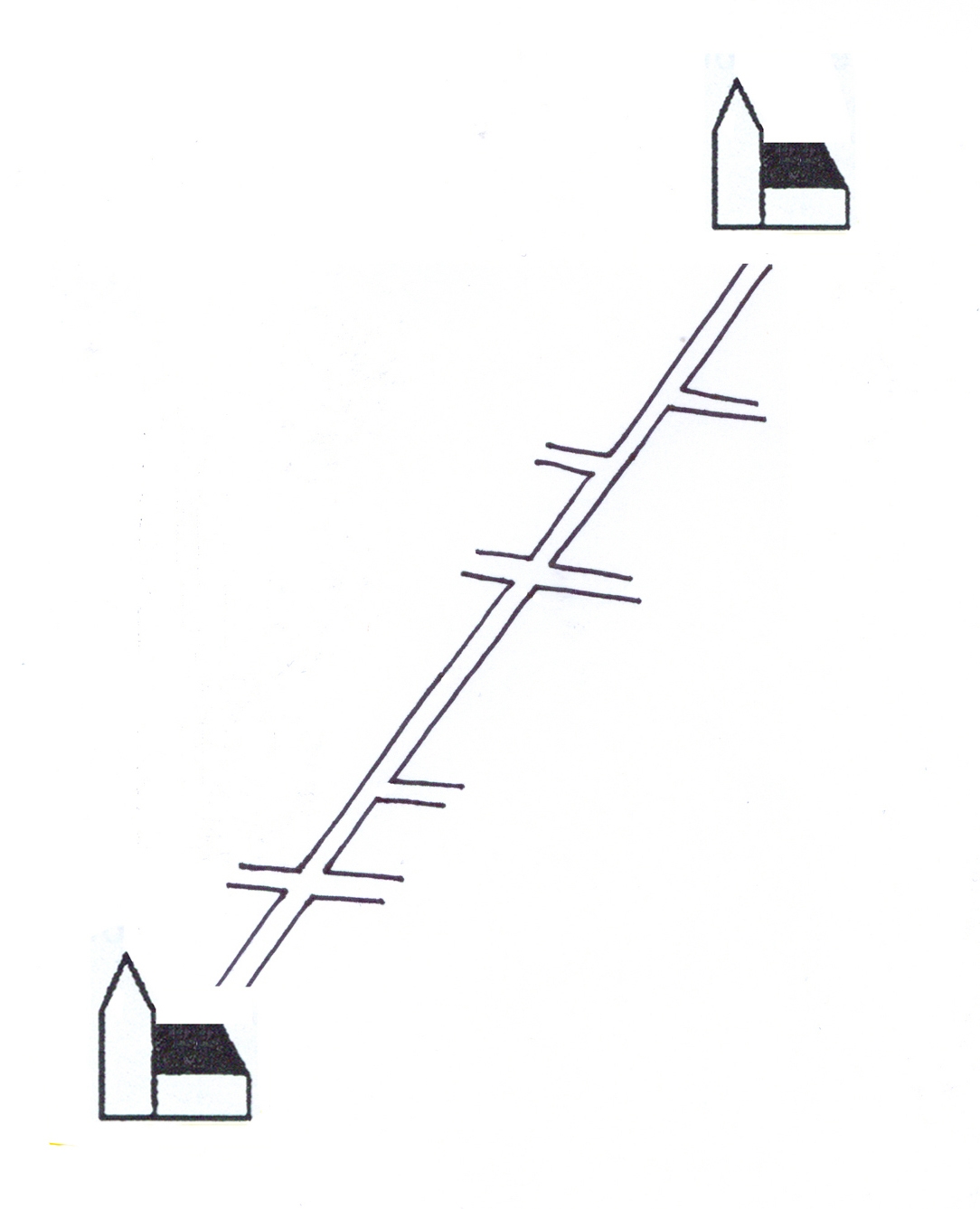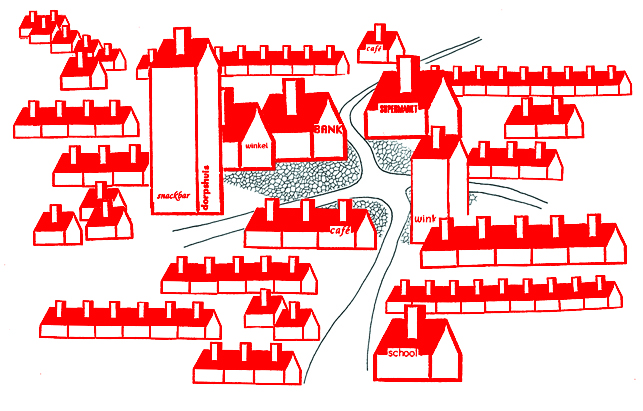The city at eye level. We stood on a ladder at a height of 2.5m above bridge no. 30 that makes Vijzelstraat cross the Herengracht, in between the tram rails. This turned out to be the exact spot where Gerrit Adriaensz Berckheyde painted his famous painting View of the Golden Bend of the Herengracht in 1671-72.
Berckheyde has made conscious choices to draw attention to this special part of Amsterdam under construction. Here the elite erected classicist palaces on deep and narrow plots. No boat disturbs the reflection in the water or horse-drawn carriage blocks the entrances. The trees and lampposts that were already there at that time have also been omitted from the canvas. A cityscape has been reduced to invite and seduce The painting is a concise summary of a sublime district with still a special appeal. As a canvas that can be filled in by the users.
At the invitation of the Rijksstudio to create a Masterpiece, we were inspired by the painted cityscapes from the Rijksmuseum collection. This canvas by Gerrit Adriaensz Berckheyde in particular. As urban planners, we analyze the city at eye level and look for a fundamental form of resilience in our designs that make them last for centuries. The city as palimpsest.
To communicate these, we bring our audience to the supposed reality. To a district, a lively street, or a traffic junction that only exists on paper. Which point of view do you choose, to let the viewer experience the created world? Are we floating above the street or are we standing on the sidewalk? Which sunlight fits best; July, at the end of the day or February in the morning? Looking for which illusion of reality carries the right message. The observation as a silent witness.
As an adaptation of the painting by Gerrit Adriaensz Berckheyde, the confrontation was sought with the current cityscape. To see how this image of the painter looks today, we tried to look up the exact position of the canvas. This appears to be well above the bar of the bridge and in the middle of the tram rails. That could be true, because in 1882 the bridge was lowered and widened considerably for traffic. With the digital staff map of Amsterdam, we dissected the perspective and were able to determine the lens. Yet the images do not exactly match. In the painting, the buildings in the back are slightly blown up to reinforce the bend in de canal.
The contemporary use of car traffic and tourism complements the painting. This results in an intriguing amalgamation. Passers-by seem to stroll through the cityscape in ignorance. Spectators became street actors. Whereas in the Rijksmuseum we stand shoulder to shoulder with our gaze fixed on this image of the canal, in reality we can enjoy our acting in this urban landscape, and we have the luxury of walking past it carelessly.
